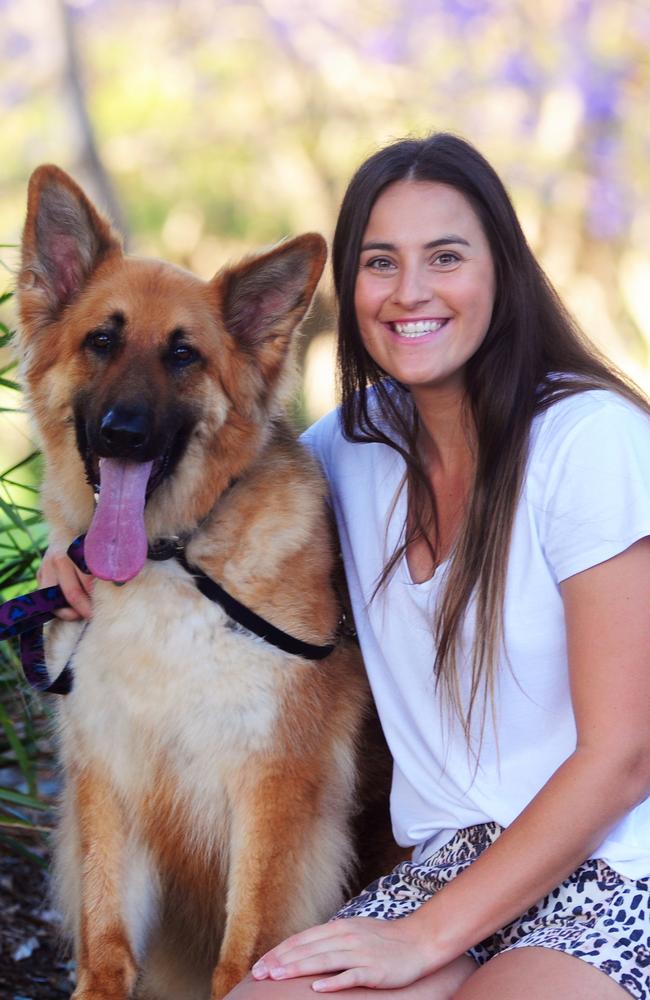Pet insurance costs raised by up to $720 a year
The cost of pet insurance has risen by as much as $720 a year. See which breeds copped the biggest increase.
National
Don't miss out on the headlines from National. Followed categories will be added to My News.
Exclusive: As pet ownership boomed during Covid – so did the cost of insurance.
Pet insurance premiums for one-year-old dogs rose by 46 per cent over the past five years, with policies averaging between $240 and $720 a year.
French bulldog owners have seen the biggest price increase, forking out $1074 more compared to five years ago, followed by owners of Italian greyhounds ($435) Dachshunds ($243) and Cavalier King Charles Spaniels ($335).
More than a third of people surveyed by comparison site Finder also revealed they got a pet since the start of the Covid-19 pandemic – but only 13 per cent had taken out pet insurance.
Of those insured, 20 per cent were cat owners and 26 per cent were dog owners, according to Finder’s Consumer Sentiment Tracker.
As a nation, Australians spend an estimated $21.9 billion on pet care each year, with owners spending anywhere from $20 to $60 a month on insurance.
“There isn’t a particularly big difference between what pet insurance covers now compared to five years ago,” Finder’s insurance expert Gary Hunter said.

“However, a lot of insurers have removed sub-limits from their policies. This is when they place a limit on how much you can claim for a specific ailment.
“With lots of policies now, if your pet gets sick, you can claim up to the annual limit, which is usually between $15,000 and $30,000.”
Pet Circle head veterinarian Dr Teagan Lever said people need to be aware of falling into the trap of thinking their animals are covered for illnesses and injuries – only to be left with a hefty bill when they discover they’re not.
She said it’s important for pet owners to check the product disclosure statement of the policy and “make sure you know exactly what you are getting coverage for”.
“Not everything is covered by pet insurance,” Dr Lever said.
“Common health issues that can be excluded from a pet insurance policy include tick paralysis, snake bites, and ruptured cruciate ligaments, which can cost thousands of dollars to treat.
“Most insurance policies don’t cover regular visits for vaccinations or dental health procedures.”

In 2013, the Australian Veterinary Association (AVA) set up a pet insurance taskforce to deal with insurance companies and reform issues including confusing policy wording.
The AVA’s Dr Cristy Secombe said since then the issues surrounding pet insurance have been “shrinking” with more products and “greater flexibility” now in the market.
“Prior to the last three years, the market was dominated by only one or two insurers all of whom had similar policy wordings,” Dr Secombe said.
“There are now six underwriters providing close to 100 pet insurance products in Australia. “The best providers now give greater clarity around pre-existing conditions, and more flexibility.”
Dr Secombe said with the increasing demand for veterinary services – particularly after the pandemic – the cost of animal healthcare is “higher than many people expect”.
“Many owners compare the cost of treating their pets to the treatment of their own ailments, which is heavily supported by Medicare. Unfortunately there is no Medicare for animals,” she said.
“If it’s difficult for people to be able to pay for unexpected veterinary care, insurance can be a safety net that can allow your pet to get the care it requires, without causing financial hardship.
“So while costs related to animal healthcare are rising, including insurance, so too is the toll being taken on our profession.”

Clare Maxfield knows when she spends less than $35 a fortnight for pet insurance, it’s giving her a peace of mind.
Her pet insurance helped save her from forking out thousands in treatment and ongoing medication, after her 13-year-old dog Pacho was diagnosed unexpectedly with heart disease last year.
“He went immediately onto heart tablets and diuretics and it’s ongoing. It was such a help when I picked up a repeat of his medication and had it covered,” Ms Maxfield said.
“Pacho is my everything. It really is peace of mind knowing that I can afford to give him the care he needs as he is getting older.
“I would hate to be making decisions based on the financial outlay and not his welfare and comfort.”

For Amy Sommerville, 29, pet insurance saved her eight-year-old dog’s life and helped ease the financial stress on the family.
Her dog Django was diagnosed with T-Cell Lymphoma in 2019 before he underwent six months of chemotherapy.
“We always joke about Django being a house deposit. I was completely worried about it not being covered by pet insurance,” Ms Sommerville said.
“Most families when they get into this situation are faced with the harsh reality of going through with the treatment or having to make the hard decision of euthanising their dog because they can‘t afford it.”
However, Ms Sommerville said despite the benefit of insurance, she believes the costly industry still needs a “huge overhaul”.
“Now Django has had cancer, we can’t change pet insurance providers as it is considered a pre-existing condition so we won’t be covered for it if we did change,” she said.
“Which to me is ridiculous. We are now stuck with a provider where there may be better suited options for Django.”

CHOICE Insurance Expert Jodi Bird said comprehensive pet insurance policies usually cover surgery, hospitalisation and medicines, but may exclude dental care, vaccinations, desexing and preventive treatment.
“There is also often a cap on cover for the treatment of swallowing objects. Some policies have unlimited cover for this, but some will only cover you for once or twice a year,” Mr Bird said.
“Pet insurance premiums also go up as your pet gets older. It is always worth checking to make sure you are getting the best value possible.
“Switching can sometimes be a good move, but be careful around pre-existing conditions and other conditions before you cancel your current policy.”
PROS OF INSURANCE
- There’s more competition in the market
- Pet insurance can give you peace of mind
- Pet insurance has improved and some restrictions have been lifted
- Claims can be quick and easy
- You can add on routine care cover
CONS OF INSURANCE
- Pet insurance can be expensive
- Price increases could make pet insurance unaffordable
- You need to buy it when your pet is young
- Finding cover for rescue pets can be difficult
- Exclusions, low limits and caps
- Getting insurers to pay up
HOW TO DECIDE IF PET INSURANCE IS FOR YOU
- Talk to your vet. Ask what conditions your pet could develop later in life and what would the treatment cost?
- Get quotes from several insurers. Compare cover, cost, excess, cover percentage and sublimits.
- Consider whether it would be better to set up a special bank account and save the pet insurance premiums.
- Take out insurance early in your pet’s life, before they have developed any health conditions.
- If your new pet still needs council registration, desexing and vaccinations, check if the pet insurer offers optional routine care cover for those. The extra cost may be worth your while, especially for the first year of cover.
More Coverage
Originally published as Pet insurance costs raised by up to $720 a year




